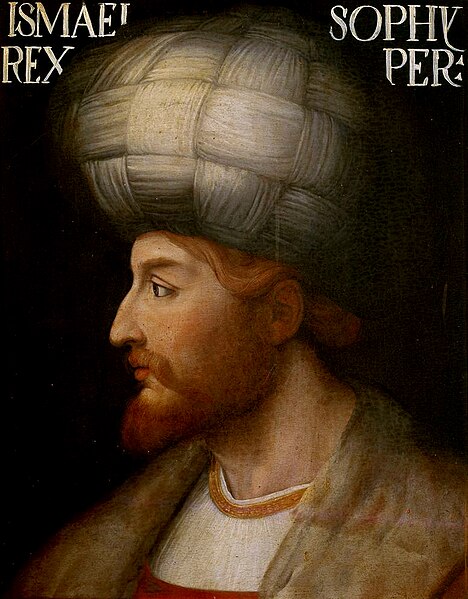Lahabali kɔligu:Portrait of Shah Ismail I. Inscribed "Ismael Sophy Rex Pers". Painted by Cristofano dell'Altissimo, dated 1552-1568.jpg

Jɔhiyuli maa galisim:468 × 599 anfooni bihi bihi. Din pahi resolutions: 187 × 240 anfooni bihi bihi | 375 × 480 anfooni bihi bihi | 776 × 993 anfooni bihi bihi.
Faal maa maŋmaŋa (776 × 993 pixels, file size: 438 KB, MIME type: image/jpeg)
Faal tarihi
Dihimi dabisili/saha n-nya kɔl' bihi kamani di ni di yina shɛm
| Zuŋɔ dabisili/Saha | Thumbnail | Di tarisi | ŋun su | tɔhibu | |
|---|---|---|---|---|---|
| din na chana | 09:31, 16 Silimin gɔli October 2014 |  | 776 × 993 (438 KB) | مانفی | quality |
| 09:31, 16 Silimin gɔli October 2014 |  | 776 × 993 (438 KB) | مانفی | quality | |
| 16:37, 17 Silimin gɔli March 2005 |  | 450 × 542 (53 KB) | Bontenbal | {{PD}} |
Lahibali kɔligu zaŋ tum tuma
Din doli ŋɔ na yaɣili tuma nima zaŋ ti lahabali kɔligu ŋɔ:
Duniya zaa lahabali kɔligu zaŋ tum tuma
Wikis shɛŋa ŋan dolina ŋɔ gba malila faal ŋɔ n kuri bukaata:
- Zaŋ tum tuma af.wikipedia.org zuɣuc
- Zaŋ tum tuma ar.wikipedia.org zuɣuc
- شيعة اثنا عشرية
- إيران
- إسماعيل الصفوي
- الشيعة في العراق
- أذر
- تاريخ بغداد
- تحويل الصفويين لإيران من المذهب السني إلى الشيعي
- مقرن بن زامل الجبري
- ملوك فارس وإيران
- بوابة:تبريز
- بوابة:تبريز/مقالة مختارة/أرشيف
- بوابة:تبريز/مقالة مختارة/2
- شاه رستم الأول
- مستخدم:Ajwaan/ملعب2
- احتلال البصرة 1697
- بوابة:أذربيجان (إيران)
- بوابة:أذربيجان (إيران)/شخصية مختارة/1
- قائمة حكام الدولة الصفوية
- كريستوفانو ديل ألتيسيمو
- ممالك إيران المحروسة
- Zaŋ tum tuma arz.wikipedia.org zuɣuc
- Zaŋ tum tuma azb.wikipedia.org zuɣuc
- Zaŋ tum tuma az.wikipedia.org zuɣuc
Yulima more global usage zaŋ chaŋ lahabali kɔligu ŋɔ.

